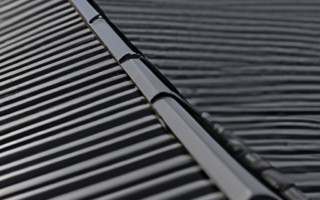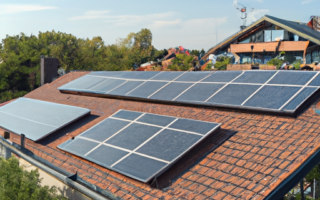The Versatility and Durability of Clay Tile Roofing
When it comes to roofing materials, clay and concrete tiles have stood the test of time. This versatile and durable option has been used for centuries to provide reliable protection for homes and buildings. Let’s take a closer look at the benefits and advantages of clay tile roofing.
Clay tiles are made from natural clay, which is one of the oldest building materials in the world. They are known for their distinctive appearance, with a classic and timeless appeal that adds a touch of elegance to any property. Available in a variety of colors, shapes, and styles, clay tiles offer countless design possibilities to suit different architectural styles.
One of the key advantages of clay tile roofing is its exceptional durability. Clay tiles are specifically designed to withstand harsh weather conditions, including high winds, heavy rains, and extreme temperatures. They have a high thermal mass, which means they can absorb and release heat slowly, helping to regulate indoor temperature and reduce energy consumption. This quality also makes them resistant to fire, as they do not burn or release toxic gases.
Moreover, clay tiles are known for their longevity. With proper installation and maintenance, a clay tile roof can last for over 50 years, sometimes even up to a century. This makes them a cost-effective option in the long run, as they require minimal repairs or replacements compared to other roofing materials.
Additionally, clay tile roofing is environmentally friendly. Made from natural materials, clay tiles are recyclable and do not contribute to landfill waste. They also have a negligible carbon footprint and do not emit pollutants or harmful chemicals, making them a sustainable choice for eco-conscious homeowners.
However, it’s important to note that clay tile roofing requires professional installation due to its weight and intricacies. Proper installation ensures that the tiles are securely fastened and can withstand the elements. Regular maintenance, such as inspecting for cracked or damaged tiles and cleaning the roof periodically, is also necessary to prolong its lifespan.
In summary, clay tile roofing offers a unique combination of versatility, durability, and aesthetic appeal. With its ability to withstand various weather conditions and long lifespan, it is a reliable choice for homeowners looking for a roof that will stand the test of time. Investing in clay tile roofing not only provides protection for your property but also adds value and enhances its overall appearance.
Exploring the Benefits of Concrete Tile Roofing
When it comes to roofing materials, clay and concrete tiles are two popular options that offer a variety of benefits. In this article, we will take a closer look at both options and explore the advantages of concrete tile roofing.
Clay and concrete tiles are known for their durability and longevity. Both materials are resistant to fire, insects, and rot, making them a great investment for homeowners. However, there are certain differences between the two.
Concrete tiles are made from a mixture of cement, sand, and water. They are available in various shapes, sizes, and colors, allowing for a wide range of design possibilities. Concrete tiles can mimic the appearance of clay tiles, slate, or even wood, giving homeowners the flexibility to achieve their desired aesthetic.
One of the major advantages of concrete tile roofing is its cost-effectiveness. Concrete tiles are generally more affordable compared to clay tiles. This is especially beneficial for homeowners on a budget who still want the look and durability of tile roofing.
Concrete tiles are also easier to install and maintain. They are lightweight, which makes the installation process quicker and less labor-intensive. Additionally, concrete tiles require minimal maintenance, with occasional inspections and cleaning being sufficient to keep them in good condition.
Another advantage of concrete tile roofing is its energy-efficiency. Concrete tiles have natural thermal properties that help regulate indoor temperature. This means that homeowners can save on their energy bills by reducing the need for excessive heating or cooling.
Furthermore, concrete tile roofing is environmentally friendly. The production process of concrete tiles consumes less energy and emits fewer greenhouse gases compared to other roofing materials. Additionally, concrete tiles are often made from recycled materials, making them a sustainable choice.
In conclusion, concrete tile roofing offers numerous benefits, such as durability, versatility, cost-effectiveness, ease of installation and maintenance, energy-efficiency, and environmental friendliness. These factors make concrete tiles an excellent choice for homeowners looking for a long-lasting, attractive, and sustainable roofing option.



